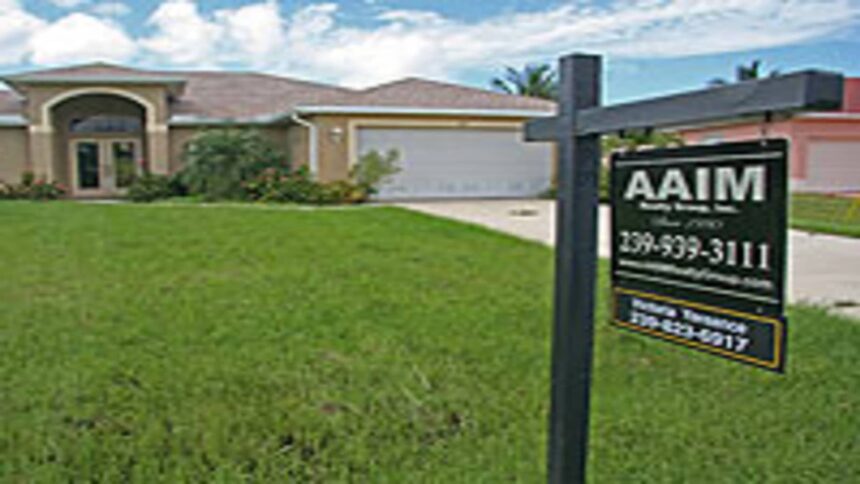“Florida continues to be one of those boom and bust markets,” says Peter Zalewski, a real estate broker and principal with Condo VultureLLC in Bal Harbour, Fla., which specializes in distressed multi-family properties. “I’ll never forget looking out at all the cranes in downtown Miami in 2005. I counted 45.”
Today, he says, the cranes have disappeared as developers sell off empty condo units in bulk (more than 10 units) to private and institutional investors for $200 a square foot, down from $300 to $400 a square foot at the beginning of 2008.
“In some cases, you can find units in condo high rises going for $91 a square foot,” says Zalewski.
Florida’s single-family home market suffered a similar fate after the housing bubble burst, demonstrated most clearly by Cape Coral-Fort Myers, the Gulf Coast metro area which boasted the highest foreclosure rate in the nation last year, according to RealtyTrac, which follows the foreclosure market. (It maintained the second highest foreclosure rate in the country for the first half of 2009, behind Las Vegas.)
“We first started seeing problems in May of 2005, when buyers were paying $50,000 for a vacant lot,” says Victoria Yereance, a Realtor with AAIM Realty Group in Ft. Myers. “Now you can pick them up for $2,000 to $3,000, depending on the area.”
Amid the rubble, however, there are signs that Florida’s housing market may be starting to turn.
Florida Realtors, the state association for real estate agents, reports existing home sales rose 28 percent in August, the most recent month for which data are available and the 12th month in a row that sales activity increased in year-over-year comparison.
The group also reported a 45-percent rise in the statewide sale of existing condos in August, compared to year-ago data.
Some 16 of Florida’s metropolitan statistical areas, or MSAs, reported increased existing home sales in August.
“This is encouraging news, and while it shows the beginnings of recovery, the housing market still needs time to continue its gradual absorption of housing inventory that will help stabilize home prices,” says Cynthia Shelton, a broker with Colliers Arnold in Orlando and president of the statewide association.
Indeed, the strength in home sales data tells only half the story of Florida’s housing market performance.
According to Florida Realtors, the median sales price for existing homes statewide was $147,400 in August, down 22 percent from $188,500 a year ago, as foreclosures and other distressed properties put downward pressure on prices.
In the multi-family housing market, the median sales price for existing condos in August was $107,500, down 32 percent from $158,1000 a year earlier.
By comparison, the national median sales price for existing single-family homes in August was $177,500, down 12.1 percent from a year ago, according to the National Association of Realtors.
The median price nationwide for existing condos, meanwhile, was $179,300, down 15.7 percent from August 2008. (The price of condos is skewed higher, notes NAR spokesman Walter Molony, because condos tend to exist in higher priced markets.)
“We’ve seen a 300 percent increase in the sale of single family homes in Lehigh Acres (a residential town that borders Cape Coral) so sales volume is up significantly, but values are not,” says Yereance. “I’d say 75 percent of our sales and inventory in Lehigh County are for distressed properties, including short sales and foreclosures.”
While undeveloped lots would fetch $50,000 in Cape Coral and Lehigh Acres in May of 2005, she notes, buyers can now pick them up for $2,000 to $3,000.
Plunging prices, of course, are a necessary part of the growth curve, helping to make homeownership more affordable to the masses and clear out inventory.
Potential buyers who were priced out of the market just a few years ago, now see opportunity to own for less.
“I’m absolutely excited that prices have come down as much as they have because it’s attracting a lot of new and qualified buyers into the market,” says Summer Greene, a Realtor with Prudential Florida First Realty in Fort Lauderdale. “It now makes sense to buy again versus renting.”
In Broward County south Florida, she says, which includes popular beach communities like Fort Lauderdale, vacation home buyers are reentering the market in force.
“We’re seeing a tremendous uptick in activity at our office with many homes getting multiple offers,” she says. “One of our agents recently listed a home and within three days it had nine competing offers. The house ultimately went for $7,000 over the asking price.”
What’s more, foreign investors, are taking advantage of the weak U.S. dollar and snapping up properties for use as a second home or to generate rental income.
“In south Florida, we’ve been fortunate because we’re extremely attractive to international investors,” says Zalewski. “We get buyers from Russia, France, Canada, Columbia, Italy, Germany—all over the globe. Most people still believe in the upside potential of Florida real estate.”
Those investing today, he notes, are “looking for a way to go long, preserve their wealth and take advantage of the market.”
Many, too, are making all-cash transactions, a byproduct of tighter lending restrictions.
Florida, perhaps more than any other state, epitomizes the dramatic rise and fall of the nation’s housing market.
Though the state continues to struggle with high foreclosure rates and an excess of available homes, leading indicators suggest its residential market is on the road to recovery.
With speculators out of the market and inventories falling fast, says Yereance, prices are likely to rebound in the next few years—and maintain a more sustainable growth rate going forward.
“Florida is still a healthy market and the more we can get rid of inventory the sooner we can return to a [healthy balance of supply and demand],” she says. “The perception that you can come to Florida and buy a $500,000 home for $250,000 is not realistic, but you can find deals. It’s affordable again and it probably will stay that way for another few years. ”





